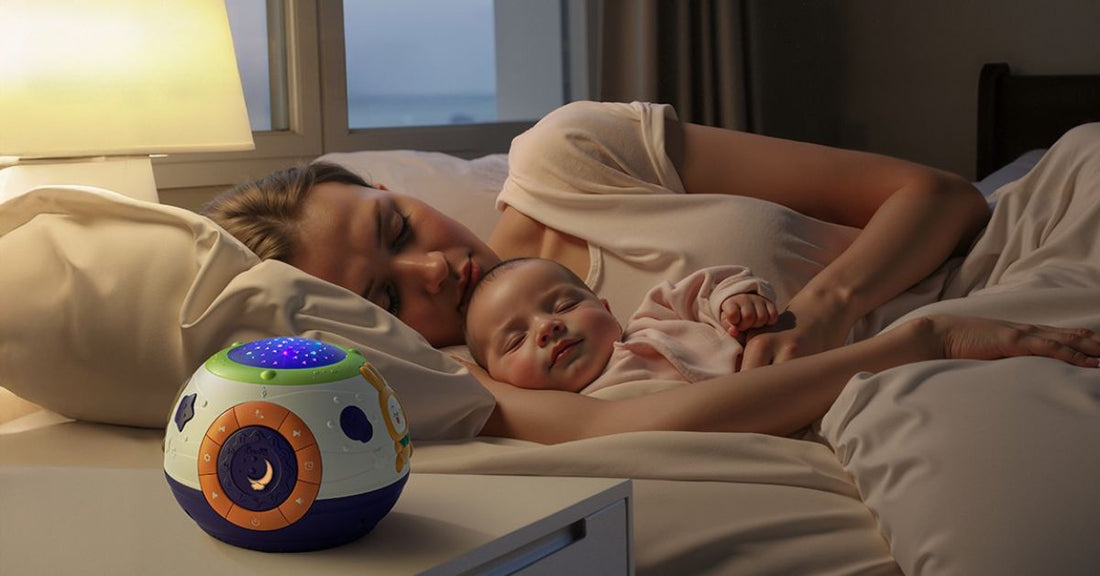Is White Noise Bad for Babies? Does It Really Help or Harm Your Little One?

White noise is a popular tool for soothing babies to sleep, but is it truly safe? Research shows that when white noise is kept at or below 50 decibels, placed at least two meters away from your baby, and not used continuously, it can effectively improve sleep without harming hearing or development. By using white noise moderately and responsibly, parents can create a calming sleep environment and avoid potential risks.
White noise has become a popular recommendation among parents, promising better sleep for babies. But does white noise truly help, or could it actually be harmful to your baby's health?
White noise is generally safe and beneficial for babies when used properly at recommended volumes. It can effectively help babies fall asleep faster, soothe excessive crying, and mask disturbing background noises. However, it can pose risks if used incorrectly—such as prolonged exposure to excessively loud sounds (above 50 decibels) or constant, uninterrupted usage, potentially causing hearing damage or developmental concerns. To safely use white noise, keep the volume moderate, use it intermittently, and ensure devices remain at least seven feet (about two meters) away from your baby's sleeping area.
Now that you've understood the overall safety and benefits of white noise usage, you might still have additional questions. How loud should white noise be? Can babies become dependent on it? What are its possible long-term effects, and how can you ensure you're using white noise correctly? Let's dive deeper into these important questions to fully equip you with the knowledge you need.
How Loud Should White Noise Be for Babies?
Many parents worry that the white noise they use might be too loud for their babies' sensitive ears.
Research articles published by the U.S. National Library of Medicine recommend maintaining white noise levels at or below 50 decibels, approximately the noise level of a gentle dishwasher or soft rainfall. This volume is sufficient to soothe babies without risking hearing impairment or overstimulation. To further enhance safety, place the white noise device at least seven feet (two meters) away from your baby's crib or bassinet.
Can Babies Become Dependent on White Noise?
Parents often worry their baby might become overly dependent on white noise, making sleep difficult without it.
Babies can indeed grow accustomed to white noise as a sleep cue, but significant dependence is uncommon and manageable. To avoid serious reliance, gradually decrease white noise volume or duration over weeks or months. It's also beneficial to sometimes allow your baby to sleep without white noise, helping them adapt to different sleeping environments and conditions.
Are There Any Long-term Effects of Using White Noise for Babies?
Parents often express concerns about potential long-term health or developmental impacts from regular white noise usage.
Current studies indicate that moderate, responsible white noise use does not cause proven long-term negative effects on babies. However, constant exposure to overly loud white noise or continuous background noise may negatively influence language acquisition and auditory development. Therefore, it is recommended to limit white noise use to sleep and calming times rather than employing it continuously throughout the day.
What Are the Best Practices When Using White Noise for Babies?
New parents might be unsure about the safest and most effective ways to use white noise for their babies.
Best practices for using white noise with babies include maintaining a volume no louder than 50 decibels, positioning the sound machine at least seven feet away from the baby's sleeping area, and using white noise primarily as a sleep aid rather than constant background noise. Occasionally reducing reliance on white noise can promote adaptability and ensure your baby remains comfortable in varied sleep environments.
Conclusion
In conclusion, white noise is not inherently bad for babies when used properly. With mindful usage—keeping volume moderate, ensuring adequate distance from your baby, and limiting the duration of use—it can safely and effectively soothe your baby and promote better sleep. However, moderation is key: excessive volume, continuous exposure, or total dependence may pose risks. Armed with accurate knowledge and best practices outlined above, you can confidently use white noise to create a safe, comforting environment that benefits both you and your baby.







0 comments